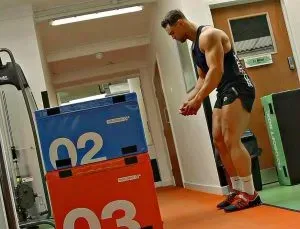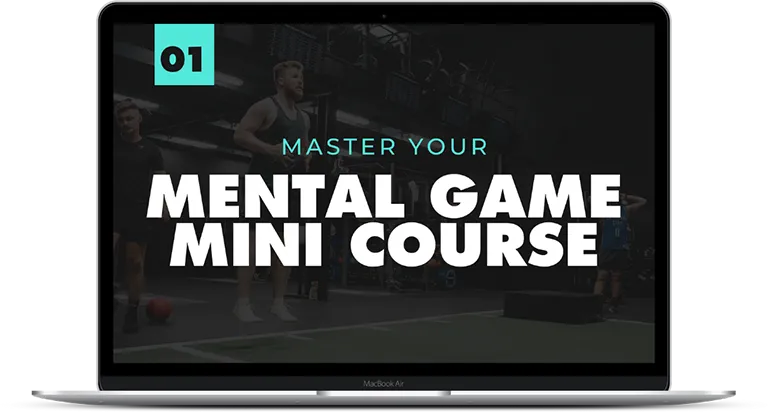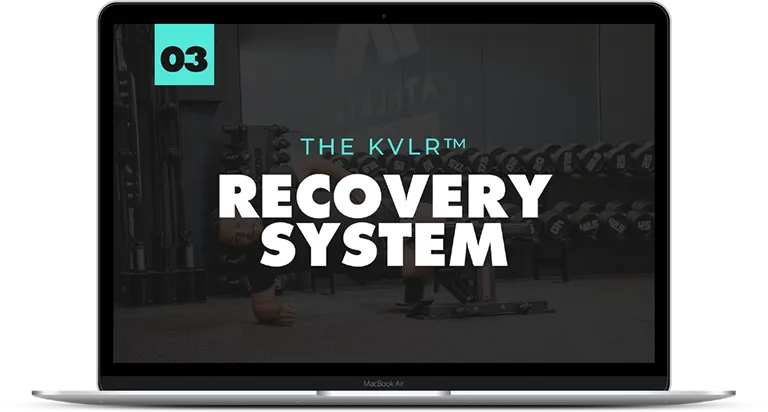Athletes Authority
Latest Blog & Insights

The Role and Importance of Contrast Training In Athlete Development
Contrast Training
One of the most effective training methods for developing the whole range of the force velocity curve is contrast training. The principle of this method revolves around its capacity to provide a more complete development of the motor capacities and strength qualities by varying the external load during the workout, exercise or (with considerably more difficulty), the repetition. This type of training has a substantial effect on the nervous system as well as the peripheral muscular structures.
This was first brought to my attention through coaching legend Cal Dietz, who, at the time, wrote one of the legacy strength and conditioning texts, Triphasic Training. It’s a complicated text, but his contrast methodologies can be broken into two principal tiers:
Variation of the lifting speed/load during a session of training, by choosing two or more exercises of the same movement pattern with one (or more) exercise(s) working on limit strength (bench press) and the other(s) on reactive-strength (bench throw), performed in a superset.
Within one (drop) set, you intermittently reduce load, starting from a limit strength exercise (Squat – BB) at 85-90% for 3 reps, then quickly reduce load to 60% for another 3-5 reps, moving the bar fast, then dropping it to 30% 1RM and doing another 3-5 reps, using an open chain alternative, like Squat Jump – BB.
The first tier of contrast training can be both done as an ascension or, descension protocol (or both), with, or without rest between exercises. These protocol were pioneered by the Russians, then adapted by the Bulgarians, and stolen by us Westerners. I kid, i’m not pro Eastern Bloc, but seriously, i’m pretty… sure that’s the timeline.
In a decension protocol (the most common of the eastern block training methodologies), the athlete would start with a slow-speed, high force exercise performed at 85-90% 1RM for 1-3 reps. Resting 2-3 minutes, the athlete would then repeat the movement pattern, performing a variation of the lift at 30-40% 1RM or, an unloaded plyometric jump. Western adaptations have replicated this training, and removing the rest. This is effective from a time management perspective, but may be negatively impacting the post-activation potentiation that usually results from high force, low velocity lifts. However, for athletes on a time schedule, this may provide better bang for buck.
In an ascension protocol, the exercises are reversed. Using the previous example, the athlete would start with a jump or throw, rest 2-3 minutes, then complete a limit strength exercise for 1-3 reps at 85-90% 1RM. This serves to train both ends of the force velocity curve under fatigue and could be a suitable strategy to reduce training monotony.
Regardless of the method chosen, we’d recommend repeating this superset 3-5 times.
It comes as no surprise that the Bulgarians took what the Russians did, and added more volume.
Instead of two exercises repeated in an alternating fashion, the Bulgarians were known for using 4-5 exercises, climbing their way up or down the force velocity curve.
Here is what one complex might look like:
Back Squat, 3-5 repetitions at 85-95%
Power Clean, 1-3 repetitions at 85-95%
Front Squat, 5 repetitions at 65%
Jump Squat, 10 repetitions at 10-20%
Depth Jump, 5 repetitions.
This may have been done with our without rest between sets, with the circuit being repeated 2-5 times. If rest was negligible, %1RM intensities would be reduced.
This sequence can be adjusted a few different ways. Firstly, you could integrate an ascension protocol here, inverting the exercises so you finish with the heaviest exercise last.
You could also do both an ascension and descension complex within the same session, eg, work down to the fastest exercise, rest 4 minutes, then repeat, starting from the fastest exercise, progressing to the slowest. In fact, if I were to search for this protocol, I’m sure it’s got a name.
You could also horizontally load the exercises compared to the more traditional vertical loading. If you’re not familiar with this terminology, instead of doing one set, moving on to the next exercise, then doing another set, then moving on again, you can do all 3-5 sets of one exercise, then move on to the next, 3-5 sets, then move on, etc.
Vertical = Do one set of each exercise in series, then repeat.
Horizontal = Do all sets of each exercise, then move on until all exercises are complete.
The second principal tier of contrast training involves the variation of the external load within one set. For namesake purposes, let’s call this intra-set contrast training. Let me clarify, this is not one of those slapstick gym fails videos where the plates fall off the bar rep after rep – this is completely planned.
This is best done with a training partner or coach. As crazy as this method sounds, it’s positioned between some strong logic.
We know that high velocity exercises have a large neuromotor demand, and low velocity, high force exercises have a higher demand on limit strength.
We know that the same exercise completed quickly, or slowly, can dramatically change the recruitment pattern of the muscles involved. A fast bicep curl activates a lot more bicep, whereas a slow one activates more brachialis, for example.
Intra-Set Contrast Method
Here is an example (moderate difficulty):
Bench Press (100kg 1RM) 3 reps at 90kg
strip weight and proceed immediately
Bench Press, 5 reps at 60kg, moved as fast as possible
Bench Press, reps 9+ (to failure) slow tempo with a 411 count (4 eccentric, 1 pause, 1 concentric).
In more ‘block’ training protocols, an athlete would do 6-8 weeks working one form of strength, then move onto another, then on to another again as their goal changes from size, to strength, to power and then speed.
With this method, you’re training all of the different forms of strength, all within one set.
We’ve used this protocol a number of times with great success.
Shock Intra-Set Contrast Method
If you are looking for a great shock training protocol (remember though, we are promoting the understanding of principles over methods), you could add a second drop set by reducing the load to approximately 30% 1RM and and completing the process again. We’ve italicised the additions from the previous example. Let’s call this the high difficulty variation.
Bench Press (100kg 1RM) 3 reps at 90kg
strip weight and proceed immediately
Bench Press, 5 reps at 60kg, moved as fast as possible
Bench Press, reps 9+ (to failure) slow tempo with a 411 count (4 eccentric, 1 pause, 1 concentric).
strip weight and proceed immediately
Bench Press, 5 reps at 30kg, moved as fast as possible
Bench Press, 5 reps at 30kg, with a 411 tempo.
Bench Press, 30kg isometric hold at your sticky point for 15 seconds or until failure.
This is a highly intensive method, and we’d only support doing this 1-2 times per exercise. The advantage of this is the clustering of exercises within a short period of time, making this highly effective within a short training window.
Beginner Intra-Set Contrast Method:
If you are introducing yourself to this form of contrast training, you could benefit from a slightly peeled-back approach. Let’s call this the beginner version. Try this for your first session, and see how you respond.
Bench Press, 80% 1RM, 2 reps (311 tempo)
Bench Press, 60% 1RM, 2 reps. (fast as possible)
Repeat, for 8-12 total sets, and 3-5 sets.
If you were interested in a periodisation plan for this approach, it could be simply done like this:
Week 1: beginner intra-set contrast method, 5 sets
Week 2: standard intra-set contrast method, 4 sets
Week 3: shock method intra-set contrast method, 2 sets
Week 4: standard contrast method, 3 sets.
We hope you’ve enjoyed the run down on complex training.
Remember, don’t get too caught up in the specifics – make sure you’re head is wrapped around the over-arching principle, which, in case you missed it, is this:
Contrast training is all about integrating multiple exercises within the same session that work across the whole spectrum of the force-velocity curve. At the very least, at least two parts along the curve.
Ideally, use exercises that stimulate the same muscles and work through the same joint motion. While you could explore a vertical force vector with a horizontal force vector e.g. hip thrust (heavy) supersetted with squat jump (light), we think you’ll get best bang for buck with matching exercises to the same force vector.
This is the end of our series, principles over methods. If you’ve missed any of the previous instalments, head back through the blog and catch up, it will be well worth your while.
Are you hungry for a competitive edge? Unlock a new level of athleticism Click here to learn more
Our resources

Master your mental game Mini Course
Discover the mindset strategies of the World’s Greatest Athletes so you can turn your mind into a weapon of performance.

THE ATHLETES AUTHORITY RECOVERY SYSTEM
Performance = fitness – fatigue. Reduce your fatigue and recover faster with our 3-step recovery system.
SYDNEY LOCATION
© 2023, Athletes Authority | All Rights Reserved
Website & Marketing Powered By Gymini

